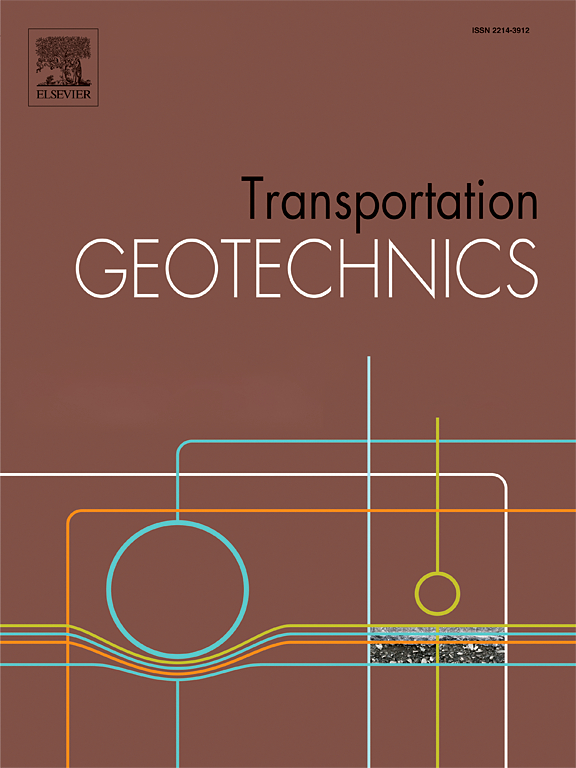An analytical solution for settlement of pile-supported reinforced low embankment considering lateral friction along pile shaft
IF 4.9
2区 工程技术
Q1 ENGINEERING, CIVIL
引用次数: 0
Abstract
The settlement formula for pile-supported reinforced embankment is established by improving the elastic foundation beam method and combining the column unit method. The traditional Winkler beams is replaced by the Timoshenko beams, and the constraint of the height of fill can be neglected because the lateral friction on the pile side is considered in the column unit method. The presented method is employed to analyze a practical engineering and compared with other methods. The results are shown to be reasonable. The effects of the variation of parameters such as pile spacing (s), thickness of load transfer platform (LTP) (h) and tensile stiffness of the geosynthetic (Sr) on the pile lateral friction and the settlement of pile-supported reinforced embankment are investigated. As s/d increases, the elastic zone with lateral friction resistance becomes shorter and shorter. The plastic zones at both ends become longer and longer. The maximum settlement generally increases with the increase of s/d. When s/d ≤ 4, the maximum settlement increases little, but when s/d > 4, the maximum settlement increases large, and the rate is 4 ∼ 5 times of s/d ≤ 4. With the increase of h/s, the length of elastic zone due to pile side friction changes little, but the whole zone shifts upwards. The maximum settlement shows an obvious gradient increase. When h/s = 0.5 the maximum settlement is about 1.5 times of h/s = 0.3 maximum settlement. With the increase of Sr, the whole elastic zone of pile side resistance becomes shorter and shifts upwards. The maximum settlement decreases in a gradient way. The settlement at Sr = 4000 is about 0.75 times of that at Sr = 1000. This paper expands the settlement theory of reinforced embankment and is closer to the real conditions, which has certain scientific significance and application value.
求助全文
约1分钟内获得全文
求助全文
来源期刊

Transportation Geotechnics
Social Sciences-Transportation
CiteScore
8.10
自引率
11.30%
发文量
194
审稿时长
51 days
期刊介绍:
Transportation Geotechnics is a journal dedicated to publishing high-quality, theoretical, and applied papers that cover all facets of geotechnics for transportation infrastructure such as roads, highways, railways, underground railways, airfields, and waterways. The journal places a special emphasis on case studies that present original work relevant to the sustainable construction of transportation infrastructure. The scope of topics it addresses includes the geotechnical properties of geomaterials for sustainable and rational design and construction, the behavior of compacted and stabilized geomaterials, the use of geosynthetics and reinforcement in constructed layers and interlayers, ground improvement and slope stability for transportation infrastructures, compaction technology and management, maintenance technology, the impact of climate, embankments for highways and high-speed trains, transition zones, dredging, underwater geotechnics for infrastructure purposes, and the modeling of multi-layered structures and supporting ground under dynamic and repeated loads.
 求助内容:
求助内容: 应助结果提醒方式:
应助结果提醒方式:


